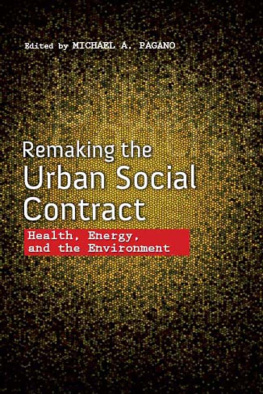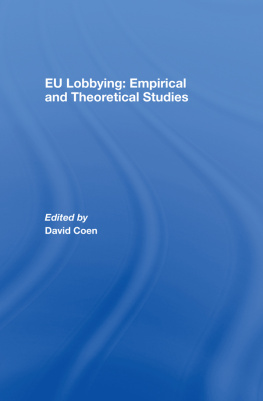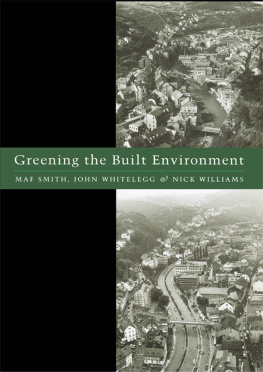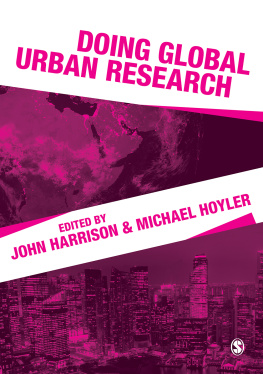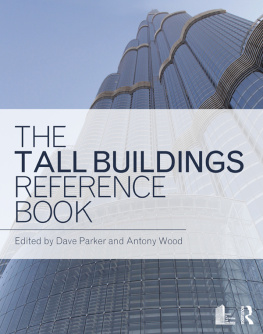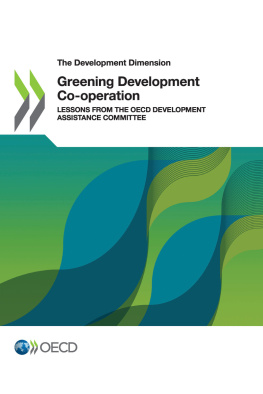Ho David Kim Hin - Greening The Urban Habitat: A Quantitative And Empirical Approach
Here you can read online Ho David Kim Hin - Greening The Urban Habitat: A Quantitative And Empirical Approach full text of the book (entire story) in english for free. Download pdf and epub, get meaning, cover and reviews about this ebook. year: 2020, publisher: World Scientific Publishing Company, genre: Romance novel. Description of the work, (preface) as well as reviews are available. Best literature library LitArk.com created for fans of good reading and offers a wide selection of genres:
Romance novel
Science fiction
Adventure
Detective
Science
History
Home and family
Prose
Art
Politics
Computer
Non-fiction
Religion
Business
Children
Humor
Choose a favorite category and find really read worthwhile books. Enjoy immersion in the world of imagination, feel the emotions of the characters or learn something new for yourself, make an fascinating discovery.
- Book:Greening The Urban Habitat: A Quantitative And Empirical Approach
- Author:
- Publisher:World Scientific Publishing Company
- Genre:
- Year:2020
- Rating:5 / 5
- Favourites:Add to favourites
- Your mark:
- 100
- 1
- 2
- 3
- 4
- 5
Greening The Urban Habitat: A Quantitative And Empirical Approach: summary, description and annotation
We offer to read an annotation, description, summary or preface (depends on what the author of the book "Greening The Urban Habitat: A Quantitative And Empirical Approach" wrote himself). If you haven't found the necessary information about the book — write in the comments, we will try to find it.
Greening The Urban Habitat: A Quantitative And Empirical Approach — read online for free the complete book (whole text) full work
Below is the text of the book, divided by pages. System saving the place of the last page read, allows you to conveniently read the book "Greening The Urban Habitat: A Quantitative And Empirical Approach" online for free, without having to search again every time where you left off. Put a bookmark, and you can go to the page where you finished reading at any time.
Font size:
Interval:
Bookmark:

GREENING
THE URBAN
HABITAT
A Quantitative and
Empirical Approach
THE URBAN
HABITAT
Empirical Approach
David Kim Hin Ho
University of Hertfordshire, UK & National University of Singapore

Published by
World Scientific Publishing Co. Pte. Ltd.
5 Toh Tuck Link, Singapore 596224
USA office: 27 Warren Street, Suite 401-402, Hackensack, NJ 07601
UK office: 57 Shelton Street, Covent Garden, London WC2H 9HE
Library of Congress Control Number: 2019957782
British Library Cataloguing-in-Publication Data
A catalogue record for this book is available from the British Library.
GREENING THE URBAN HABITAT
A Quantitative and Empirical Approach
Copyright 2020 by World Scientific Publishing Co. Pte. Ltd.
All rights reserved. This book, or parts thereof, may not be reproduced in any form or by any means, electronic or mechanical, including photocopying, recording or any information storage and retrieval system now known or to be invented, without written permission from the publisher.
For photocopying of material in this volume, please pay a copying fee through the Copyright Clearance Center, Inc., 222 Rosewood Drive, Danvers, MA 01923, USA. In this case permission to photocopy is not required from the publisher.
ISBN 978-981-120-724-2
For any available supplementary material, please visit
https://www.worldscientific.com/worldscibooks/10.1142/11472#t=suppl
Desk Editor: Amanda Yun
Printed in Singapore
Over 100 years ago, this was a mud-flat, swamp. Today, this is a modern city. Ten years from now, this will be a metropolis. Never fear. (PM Lee Kuan Yew, 1965)
This book introduces the Singapore Green Plot Ratio (GnPR) as an urban planning metric to promote the use of greenery for new and existing buildings in Singapore, with further potential application in other contemporary cities.
Increasing urban greenery enhances the quality of our built environment. Since independence in 1965, through the vision of its founder, Mr Lee Kuan Yew, Singapore has been transformed from a third world city into one of the worlds most liveable metropolises. Today, Singaporeans are privileged to live in a Garden City which is being transformed into a City in a Garden.
According to the National Parks Board (NParks), over the decades, flowering species have been introduced to make our streetscape more vibrant. The pervasive green network of nature reserves, parks, park connectors, tree-lined roads and other natural areas has made living in the city more pleasant. Efforts to conserve the nations natural heritage have seen four areas gazetted as nature reserves as well as an increase in wildlife.
The GnPR promotes the enhanced provision of urban greenery in both new and existing buildings. Trees and shrubs not only reduce the energy needed to keep buildings cool but also cleanse and refresh the air we breathe. Urban greenery plays an important role in promoting health and well-being, such as for the mental and emotional growth of both children and adults (Kua & Sia, 2016; Barton & Rogerson, 2017). Urban greenery has even been associated with reducing crime rates (Wolfe & Mennis, 2012). While it is essential that the GnPR retains its original integrity as an urban complement of the LAI, several advantages exist for deploying GnPR in the Singapore Building Construction Authority (BCA)s Green Mark allocation policy for greenery provision. The argument for urban greenery primarily lies not so much with energy savings but with social sustainability. There is growing support for the argument that greenery adds to real estate value and rental yields. Consequently, this book looks at achievable LAI values and their installation costs for specific plant types, differentiating between plant categories rather than plant species.
This book discusses the GnPR and how it can be used by urban planners and architects for both new and existing developments.
In its application, GnPR is an urban complement of the leaf area ratio (LAI) concept. Achievable LAI values and the installation costs for specific plant types suggest that urban planners and architects should differentiate using plant categories rather than plant species. Advantages exist for larger plants over the smaller and perhaps faster growing plants. For biodiversity, larger plants are more desirable than smaller ones. In the near future, a new and overall weighted greenery measure, comprising guidelines for providing urban greenery in both new and existing buildings as well as urban landscapes, could further enhance the environmental sustainability of Singapore.
Happy reading,
HO, Kim Hin/David
23 September 2019
Barton, J., & Rogerson, M. (2017). The importance of greenspace for mental health. BJPsych International, 14(4), 7981. Retrieved from https://www.ncbi.nlm.nih.gov/pmc/articles/PMC5663018/
Kua, E., & Sia, A. (2016, August 12). Green urbanism and mental health. The Straits Times. Retrieved from https://www.straitstimes.com/singapore/environment/green-urbanism-and-mental-health
Wolfe, M. K., & Mennis, J. (2012). Does vegetation encourage or suppress urban crime? Evidence from Philadelphia, PA. Landscape and Urban Planning, 108(24), 112122. doi:10.1016/j.landurbplan.2012.08.006
___________
[2017]. As Singapore continues to evolve into a City in a Garden, NParks has identified six key areas to guide national efforts towards fulfilling this vision: (1) Engaging and inspiring communities to co-create a greener Singapore; (2) Enhancing competencies of our landscape and horticulture industry; (3) Enriching biodiversity in our urban environment; (4) Establishing world-class gardens; (5) Optimising urban spaces for greenery and recreation; and (6) Rejuvenating urban parks and enliven streetscape.
The author wishes to extend his sincere appreciation to Dr ONG Boon Lay, Head of the Department of Architecture (Curtin University, Australia) who was the original Principal Investigator for the NUS research project (further mentioned below); Ms Irina ORLENKO, then Research Assistant and PhD student; and Dr Satyanarain RENGARAJAN, graduate Student Assistant, for their valuable help in the initial investigative efforts and in particular on Ms ORLENKOs part.
The author also wishes to extend his sincere appreciation to the National University of Singapore (NUS) and the National Parks Board (NParks) for jointly funding the green plot ratio (GnPR) investigation as a major research project from 20112015 (WBS No R-294-000-022-490), as well as the authors follow-up research from 20162018. The author would like to record his thanks to the various national agencies and statutory authorities in Singapore for their invaluable collaboration and partnership, including the Urban Redevelopment Authority (URA), the Housing & Development Board (HDB), and the Jurong Town Corporation (JTC).
The author is also grateful for the assistance of Broadway Malyan Ltd and its partner for overseas projects, Mr Jason POMEROY, Adjunct Professor (University of Nottingham, U.K.), without whom this book and the research project would be difficult to complete with good closure. Finally, the author very much wishes to record his appreciation of Mr Robert TEH Yoke Chong, Adjunct Lecturer (Nanyang Polytechnic, Singapore), in particular for his invaluable assistance in proof reading and editing the book for publication.
Font size:
Interval:
Bookmark:
Similar books «Greening The Urban Habitat: A Quantitative And Empirical Approach»
Look at similar books to Greening The Urban Habitat: A Quantitative And Empirical Approach. We have selected literature similar in name and meaning in the hope of providing readers with more options to find new, interesting, not yet read works.
Discussion, reviews of the book Greening The Urban Habitat: A Quantitative And Empirical Approach and just readers' own opinions. Leave your comments, write what you think about the work, its meaning or the main characters. Specify what exactly you liked and what you didn't like, and why you think so.






